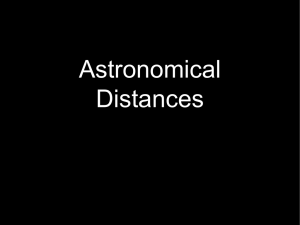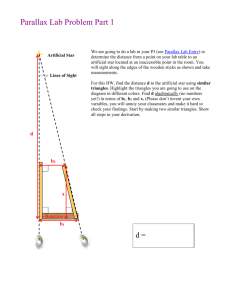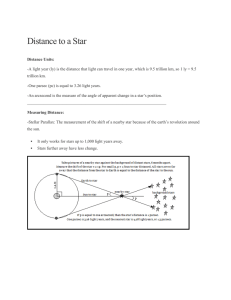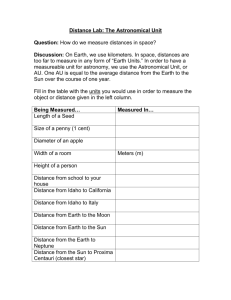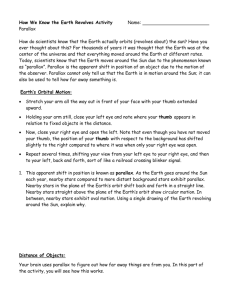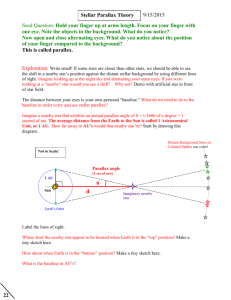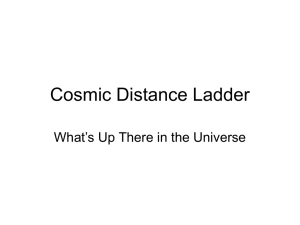Observing the Universe 3
advertisement
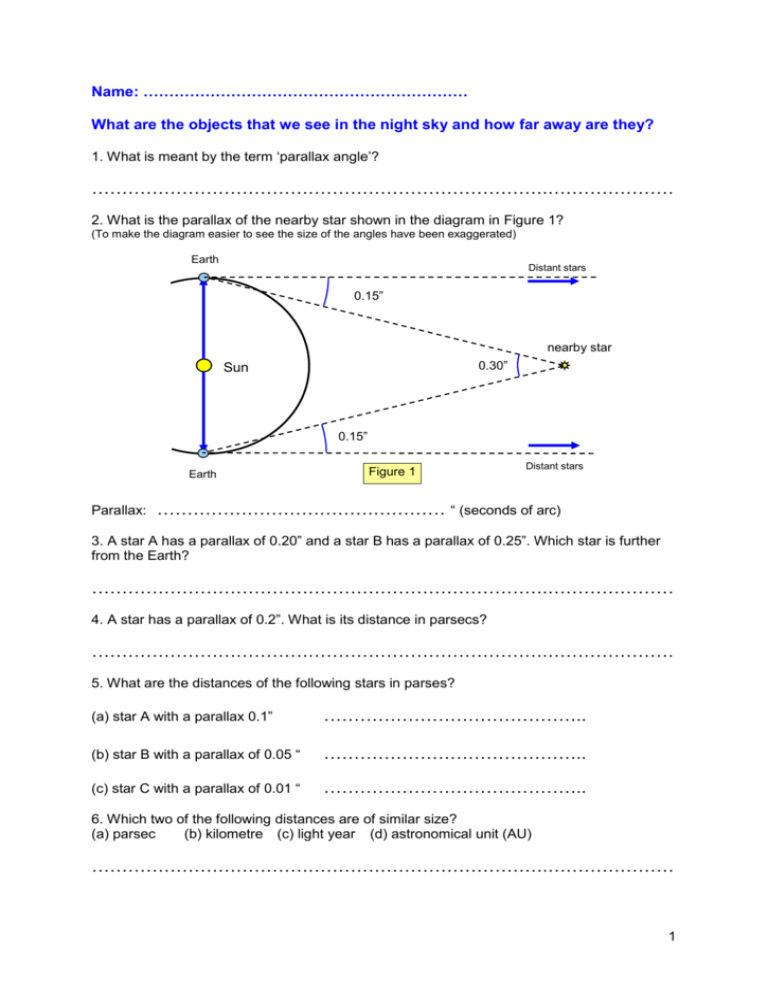
Name: ……………………………………………………… What are the objects that we see in the night sky and how far away are they? 1. What is meant by the term ‘parallax angle’? ………………………………………………………………….………………… 2. What is the parallax of the nearby star shown in the diagram in Figure 1? (To make the diagram easier to see the size of the angles have been exaggerated) Earth Distant stars 0.15” nearby star 0.30” Sun 0.15” Earth Parallax: Figure 1 Distant stars ………………………………………… “ (seconds of arc) 3. A star A has a parallax of 0.20” and a star B has a parallax of 0.25”. Which star is further from the Earth? ………………………………………………………………….………………… 4. A star has a parallax of 0.2”. What is its distance in parsecs? ………………………………………………………………….………………… 5. What are the distances of the following stars in parses? (a) star A with a parallax 0.1” …………………………………….. (b) star B with a parallax of 0.05 “ …………………………………….. (c) star C with a parallax of 0.01 “ …………………………………….. 6. Which two of the following distances are of similar size? (a) parsec (b) kilometre (c) light year (d) astronomical unit (AU) ………………………………………………………………….………………… 1 7. Which of the following is more likely to be the distance of a star that is near to the Earth? (a) 0.05 parsecs (b) 3 parsecs (c) 50 parsecs ………………………………………………………………….……………….. 8. What two things does the intrinsic (actual) brightness of a star depend on? (i) ……………………………….………………………….. (ii) ……………………………………….………………….. 9. Two stars are of the same actual brightness but one looks fainter than the other when seen from the Earth. Why is this? ………………………………………………………………….………………… 10. (a) You make measurements of the brightness of a Cepheid variable star over a period of a few days. What would you notice about the brightness? ………………………………………………………………….………………… (b) What do these observations enable you to work out about the star? ………………………………………………………………….………………… 11. What have astronomers observed in distant galaxies that have enabled them to work out the distance of the galaxy from Earth? ………………………………………………………………….………………… 12. What is the Milky Way? ………………………………………………………………….………………… 13. In the latter part of the nineteenth century telescopes revealed the presence of many fuzzy objects in the sky. What were these originally called? ………………………………………………………………….………………… 14. The photographs in Figure 2 show a galaxy and a gaseous nebula. Which is which? (a) ……………………………………. (b) …………………………………… (a) (b) Figure 2 2 15. Which contains millions upon millions of stars a galaxy or a gaseous nebula? ………………………………………………………………….………………… 16. A gaseous nebula is mainly made of which gas? ………………………………………………………………….………………… 17. Intergalactic distances are either measured in light years but more usually in units called ………………………………………………………………….………………… 18. What was the main issue of the Curtis-Shapley debate? ………………………………………………………………….………………… 19. In this debate what was Curtis’ view of this issue? ………………………………………………………………….………………… ………………………………………………………………….………………… 20. What is the distance of a galaxy that has a speed of recession of 1400 km/s. Take the Hubble constant as 70 km/s per megaparsec. ………………………………………………………………….………………… 3
